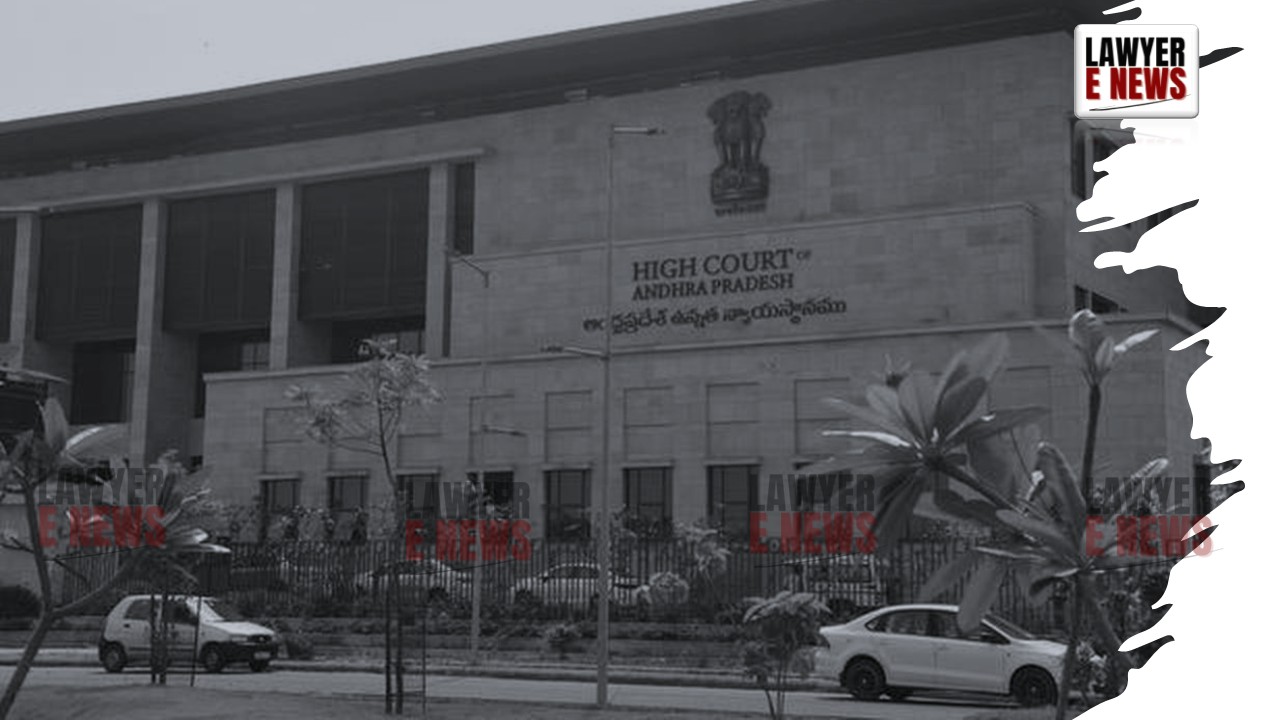-
by Admin
17 December 2025 8:55 AM



“When No Public Notice Was Issued and No Proper Inquiry Conducted, Escheat Notification Is Invalid in Law” – In a judgment reasserting procedural rigour in escheat actions, the Andhra Pradesh High Court dismissed a government appeal and upheld a trial court’s decision that quashed the State’s escheat proceedings over landed property in Srikakulam district. The Court held that the State failed to establish that the deceased owner had no legal heirs and violated mandatory procedural safeguards, including public notice and inquiry, before issuing the escheat notification.
Justice Venuthurumalli Gopala Krishna Rao, rejecting the appeal filed by the Government, observed, “The Government has not placed any material on record to show it followed the required procedure before issuance of the escheat notification. The impugned proceedings are thus liable to be set aside.”
“Escheat Requires Procedural Fairness – Gazette Notification Alone Is Not Enough”
The case stemmed from a suit filed in 1994 by M. Lalithamma, who sought a declaration that the escheat proceedings initiated by the Collector were illegal and void, and prayed for possession of the suit lands and mesne profits.
She traced her right through family lineage, showing that the deceased owner Challa Venkataramana, who died unmarried and intestate in 1982, was succeeded by his uncle Laxmanaswamy, whose daughters — Lalithamma (plaintiff) and Varahalamma — became entitled to the property. After Varahalamma’s death, her son (the 2nd defendant) and the plaintiff became the rightful heirs.
Despite this, the State initiated escheat proceedings under Section 11(2) of the Andhra Pradesh Escheats and Bona Vacantia Act, took possession of the land, and published a gazette notification in 1984 declaring the property as vested in the State.
The Court noted that, “Before issuing an escheat declaration, the Government must conduct a proper enquiry and issue public notice inviting objections. This was admittedly not done.”
“No Gazette Notification Can Override Proof of Legal Heirship”
Rejecting the government’s contention that no one came forward within three months of the gazette notification, the Court found that the plaintiff issued a legal notice in 1992 asserting her claim, but the government failed to respond or dispute it.
Justice Gopala Krishna Rao observed: “After receiving the notice [Ex.A6], the 1st defendant kept quiet and did not choose to reply or deny the relationship claimed. This silence is telling.”
The Court found the plaintiff's case fully supported by documentary evidence (Ex.A1 to A7) and oral testimony of PW1 to PW3. In contrast, the State failed to present any meaningful rebuttal.
The testimony of its witnesses — a Mandal Revenue Officer, Village Administrative Officer, and the local Sarpanch — did not dispute the family lineage. In fact, the Sarpanch admitted that Balaramaswamy was the father of the deceased, supporting the plaintiff's claim to be a Class-II heir under the Hindu Succession Act.
“Once Escheat Proceedings Are Invalidated, Possession Must Follow”
Reaffirming that escheat is a doctrine of last resort, the Court emphasised that property of a deceased vests in the State only when no legal heir can be traced after diligent enquiry and public notice.
Justice Rao held: “The trial court rightly concluded that the government’s failure to follow legal procedure rendered the escheat void. The possession of the properties must follow the title.”
He further stated that even in the appeal, the State failed to produce any additional evidence to justify its claim.
Dismissing the appeal, the Andhra Pradesh High Court upheld the trial court’s judgment dated 20 September 1999 in O.S. No. 30 of 1994, and directed that possession of the suit property be restored to the plaintiff and co-heirs. The judgment sends a strong message that escheat actions by the State must be exercised with caution, transparency, and strict adherence to procedural law.
“The State cannot simply assume ownership of private property in absence of heirs without conducting a thorough, public, and fair inquiry,” the Court clarified.
Date of Decision: 24 April 2025
